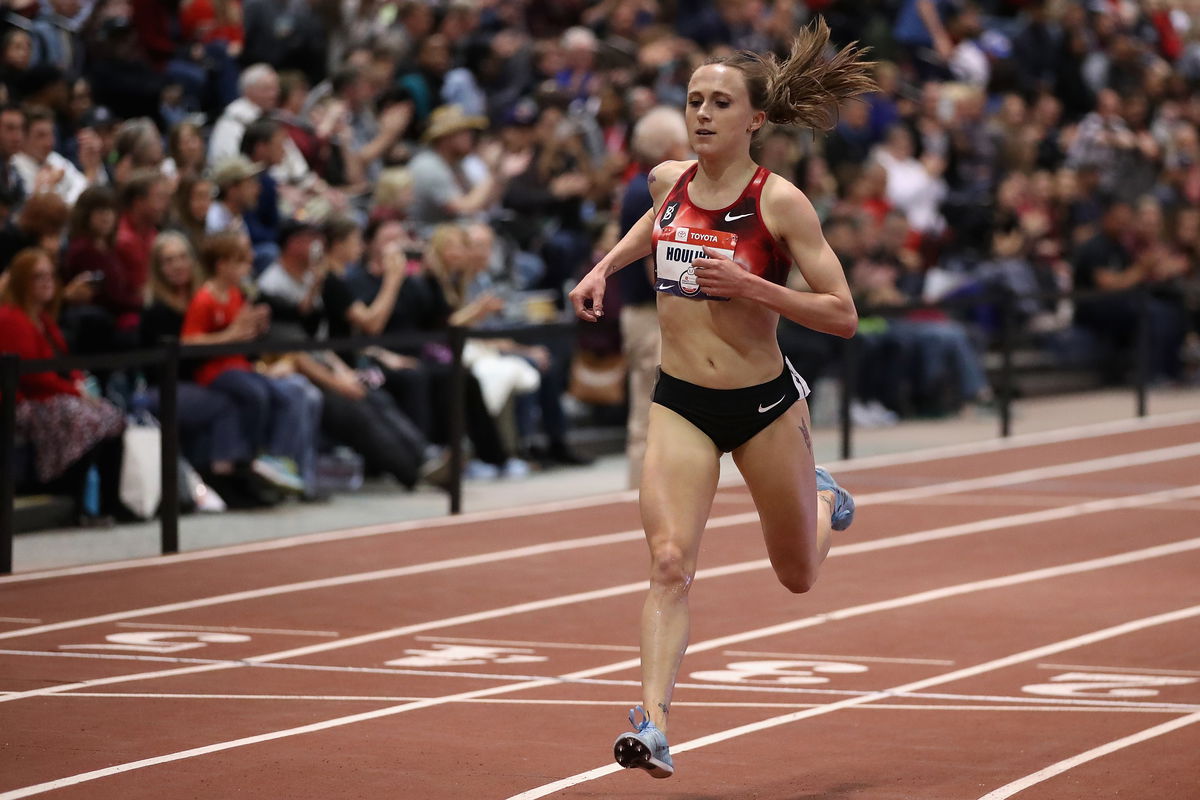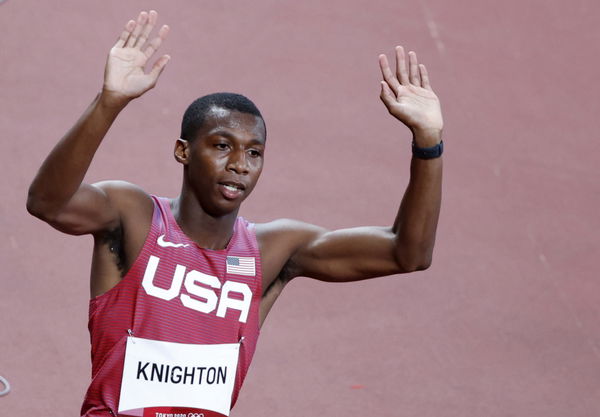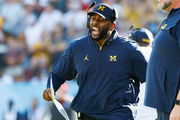
Getty
ALBUQUERQUE, NEW MEXICO – FEBRUARY 14: Shelby Houlihan crosses the finish line to win the Women’s 3000 M during the 2020 Toyota USATF Indoor Championships at Albuquerque Convention Center on February 14, 2020 in Albuquerque, New Mexico. (Photo by Christian Petersen/Getty Images)

Getty
ALBUQUERQUE, NEW MEXICO – FEBRUARY 14: Shelby Houlihan crosses the finish line to win the Women’s 3000 M during the 2020 Toyota USATF Indoor Championships at Albuquerque Convention Center on February 14, 2020 in Albuquerque, New Mexico. (Photo by Christian Petersen/Getty Images)
Track and field is a sport that maintains a stringent stance on anti-doping measures, regardless of an athlete’s wealth or success. Since the establishment of the Athletics Integrity Unit in April 2017 to oversee drug testing and investigations, over 70 Olympic and world medallists have faced doping bans. However, the application of these measures can be inconsistent, as evidenced by the case of Erriyon Knighton, the 200m world silver medallist, who tested positive for a banned substance but was not suspended, allowing him to compete in the upcoming U.S. Olympic trials. In contrast, Shelby Houlihan, who holds two U.S. Records (1500m and 5000m) was banned from competing in the Tokyo Olympics after testing positive, for nandrolone, a banned steroid.
Watch What’s Trending Now!
This highlights the complexities surrounding anti-doping measures in competitive athletics. But are you wondering why Erriyon Knighton was allowed to participate in trials even though tested positive for the banned substance? and Not Houlihan
Erriyon Knighton has been given the light to compete in the U.S. Olympic trials following a recent ruling that his positive drug test was due, to consuming tainted meat. The 20-year-old sprinter hailing from Florida, renowned for his record-breaking performances in the under-18 and under-20 categories of the 200 meters, faced a setback when he tested positive for trenbolone during an out-of-competition test in March. USADA CEO Travis Tygart stated, “We did what the rules require us to do in all positive cases. We can take comfort that justice was served and transparency as required by the rules was achieved.”
ADVERTISEMENT

ADVERTISEMENT
Upon investigation, it was revealed that the contamination stemmed from oxtail meat supplied by a Florida bakery. This revelation comes in light of Erriyon Knighton’s historic achievement, emerging as the youngest male U.S. Olympic team member since 1964. Despite being cleared to compete in the 200-meter event starting June 27, there looms the potential for appeal by either the Athletics Integrity Unit or the World Anti-Doping Agency, casting a shadow of uncertainty over his participation.
Although Houlihan maintained her innocence and linked her test result to consuming a pork burrito from a food truck, her explanation faced doubt from anti-doping authorities who enforced a four-year suspension right before the Tokyo U.S. Olympic trials in 2021. She expressed sadness and feelings of letdown, towards the sport she had devoted herself to stating, “I feel completely devastated, lost, broken, angry, confused and betrayed by the very sport that I’ve loved and poured myself into just to see how good I was.”
ADVERTISEMENT
Erriyon Knighton is not banned but Shelby Houlihan is still struggling against her ban
Houlihan vowed to contest the ban despite being barred from both the Tokyo Olympics and the Paris Olympics in 2024. Despite her assertions and efforts to demonstrate her innocence, including presenting a food log detailing her consumption, the Athletics Integrity Unit’s decision remained firm. In a determined effort to clear her name, Houlihan cited studies suggesting the presence of nandrolone in some pigs, indicating a possible natural occurrence of the substance. However, experts cast doubt on this assertion.
ADVERTISEMENT

Even though Houlihan’s camp opposed the decision and claimed her lack of knowledge, about nandrolone well as highlighting issues in the testing procedures the ban was upheld. Even after passing a lie detector test and undergoing a hair sample examination that showed no traces of the steroid Houlihans attempts to challenge the ban were unsuccessful. This situation left her career in turmoil but it’s still remembered.
ADVERTISEMENT
However, these cases show the divergent outcomes athletes experience varying results in cases of doping. As in Shelby Houlihan was suspended for four years. While Erriyon Knighton was granted permission to participate in the U.S. Trials. This difference highlights the aspects of doping protocols revealing a scenario where certain athletes are penalized while others can continue their competition. Such inconsistencies prompt inquiries, about equity and uniformity, in implementing rules.
Top Stories
Update Announced on Josh Allen’s Bills Staying Near Brown University Amid Tragic Incident

Forced to Leave FOX, Cowboys Legend Troy Aikman Says ESPN Is Like ‘U.S. Government’ & Clearly Distinguishes the Two Networks

Michigan Football Receives Disappointing Kenny Dillingham News on Saturday

2025 Vic PGA Championship: Prize Money, Winner’s Payout & More Explored

Army vs Navy: Why is U.S. President Donald Trump Attending the Game?

$250M Michigan Booster Reveals More to Sherrone Moore Saga After Paige Shiver Confirms Police Visit

ADVERTISEMENT
ADVERTISEMENT
ADVERTISEMENT

